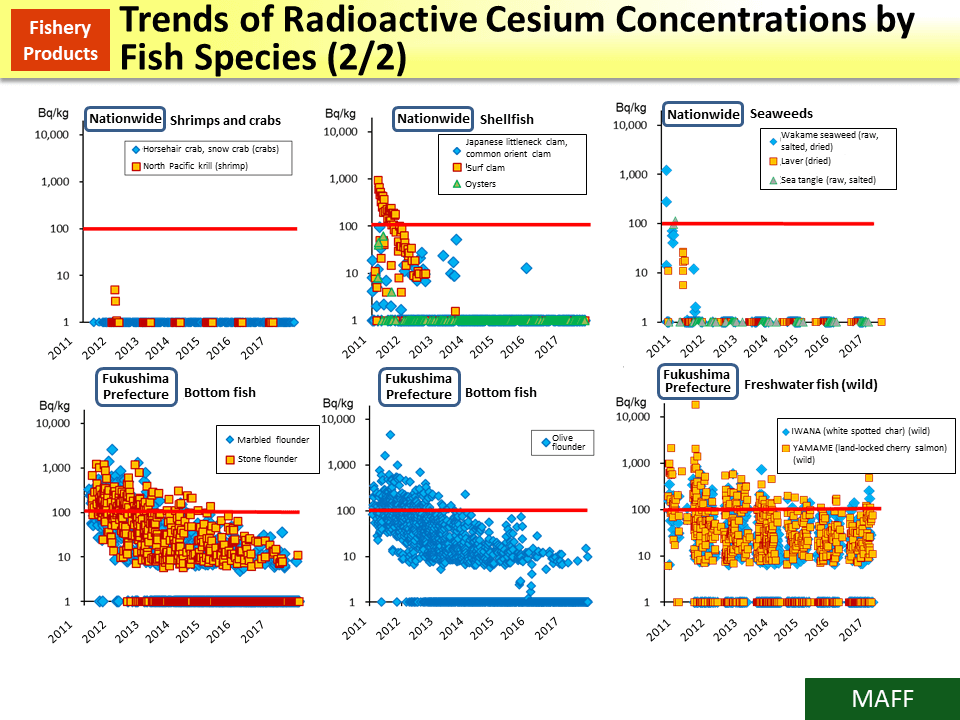Trends of Radioactive Cesium Concentrations by Fish Species (2/2)
Inspections of shrimps and crabs (horsehair crab, snow crab and North Pacific krill) showed no results exceeding 100 Bq/kg even immediately after the accident at Tokyo Electric Power Company (TEPCO)'s Fukushima Daiichi NPS. Most results were below the detection lower limit. Regarding shellfish (Japanese littleneck clam, common orient clam, surf clam, and oysters) and seaweeds (Wakame seaweed, laver and sea tangle), radioactive cesium exceeding the standard limit was detected in some samples immediately after the accident, but radioactive cesium concentrations decreased promptly thereafter. Radioactive cesium concentrations in samples of bottom fish (flatfish and flounders, etc.) caught off the coast of Fukushima Prefecture decreased over time and are all below the standard limit at present.
Inspection results for wild freshwater fish caught in Fukushima Prefecture (the figure right at the bottom) show that the percentage of samples in which radioactive cesium concentrations exceeded 100 Bq/kg was 51.3% in FY2011 but decreased as low as 1.4% in FY2016. Although some samples still show values exceeding 100 Bq/kg, but the percentage of samples exceeding the standard limit is decreasing over time.
(Prepared based on the "Inspections of Fishery Products for Radioactive Materials (December 2017)" on the website of the Fisheries Agency)
- Included in this reference material on March 31, 2014
- Updated on February 28, 2018

